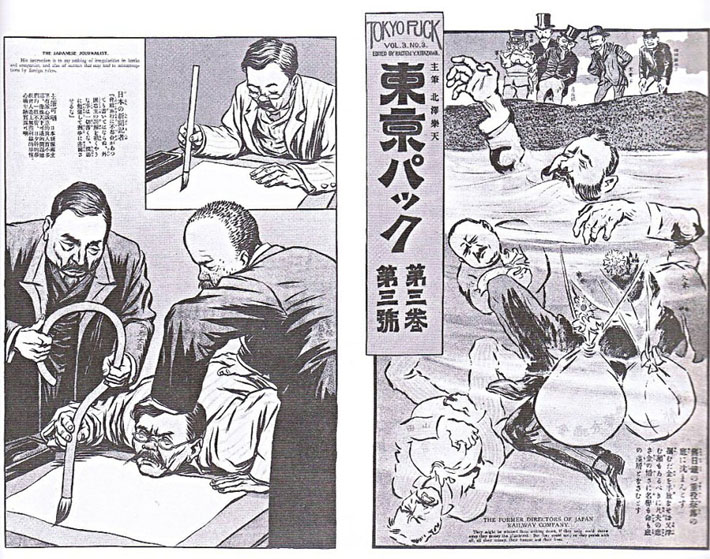(Commodore Matthew C. Perry, c. 1856-1858)
In the 1860’s, Commodore
Matthew C. Perry reopened trade agreements with Japan via diplomatic trips. Ukiyo-e prints flowed into Europe,
especially France. French Impressionistic artists, like Edgar Degas and Henri
Toulouse-Lautrec had quite an appeal for the ukiyo-e prints. This was also due to the imperialism of Europe at
the time. Paris was very much interested in other cultures and new findings.
After two centuries in exile, Japanese art appeared strange and unusual for
Europeans, yet elegant and refined. It became clear that artistic values were a
part of every aspect in the Japanese culture. Europe was experiencing
depressing after effects of the industrial movement. The Japanese spirit refreshed
creative alternatives in Europe at a time when they needed it most.
(Henri de Toulouse-Lautrec, Self-portrait in the crowd at the Moulin Rouge, 1892-95)
With the increase of urbanization
and print distribution in Japan, an increase in literacy was also prevalent.
After awhile, the roles of collector and scholar were reserved for the wealthy
class and ordinary townsfolk. With the advent of art and literature
combinations, ukiyo-e artist Katsushika Hokusai coined the term manga by publishing and distributing
books with art in them. His book, titled Hokusai
Manga, gained worldwide exposures while simultaneously influencing Western
artists like Vincent Van Gogh and Paul Gauguin. The multi-colored,
straightforward, patterned styles of ukiyo-e
prints continue to be expressed in modern day Japanese manga and anime. For
example, manga artists were the first
to depict figures with different colored hair. Ever since then, variations of
eccentric hair colors have inundated itself into the dominant population of
citizens with black hair color. It is also more common that the youth will
mimic manga than the older
generations. The first artists to experiment with Japanese animation were the manga artists themselves. They
considered it to be an extenuation of the
manga print, but in moving form. Known as anime, these Japanese animations required smaller budgets than live
action movies, and garnered the same fan base as their manga counterparts.
(Rakuten Kitazawa, Tokyo Puck
Magazine Vol. 3, 1905)


